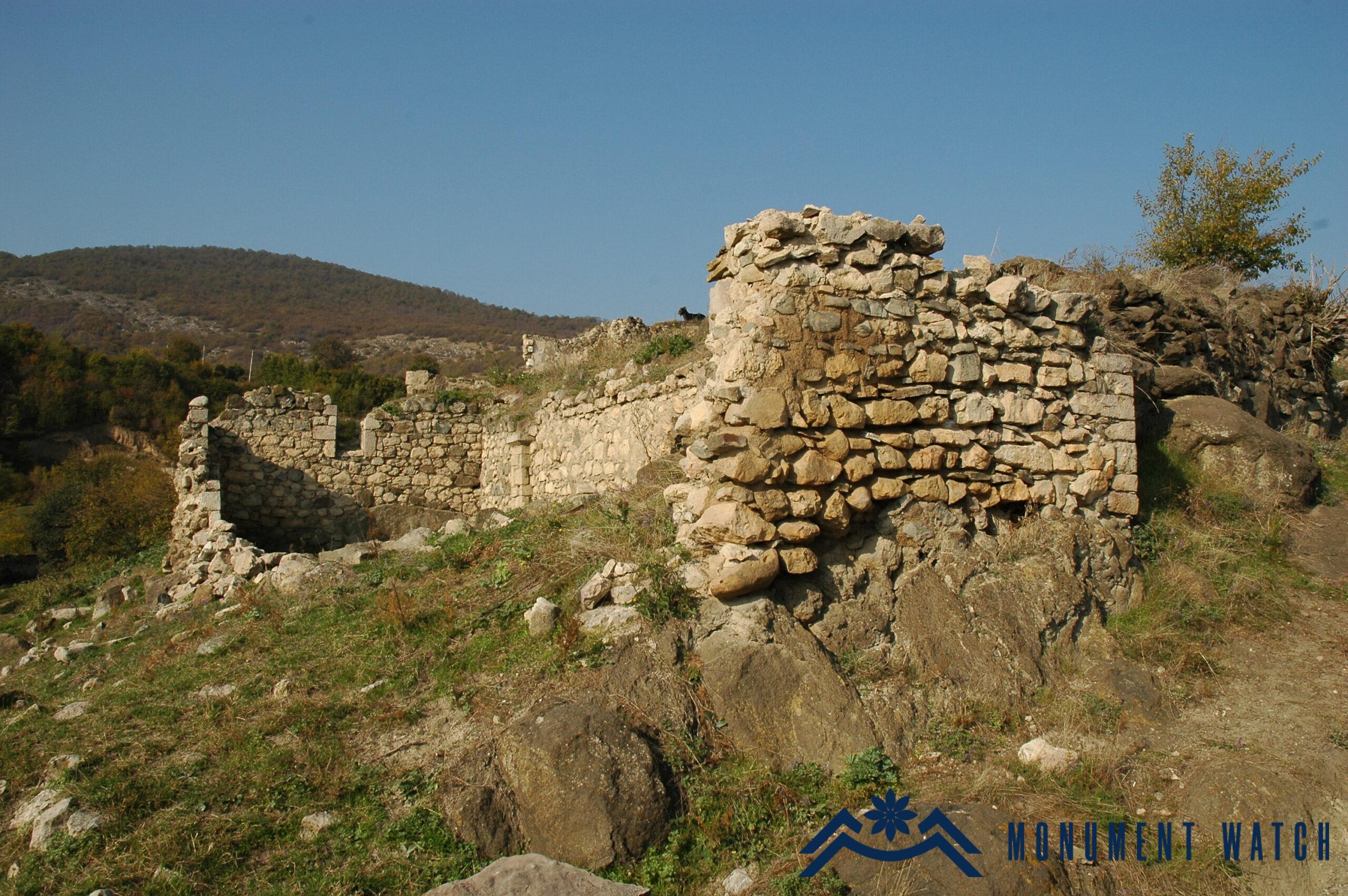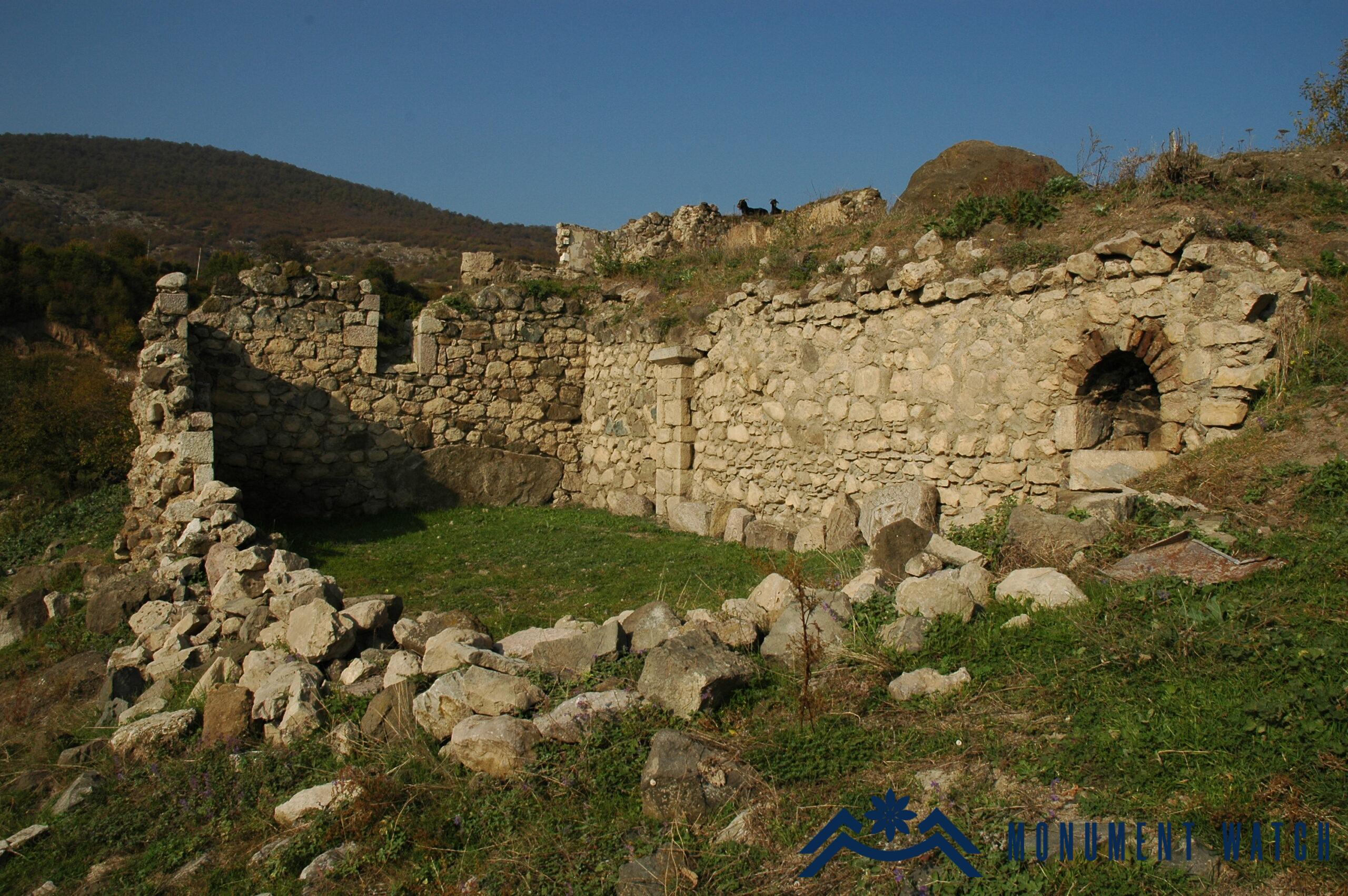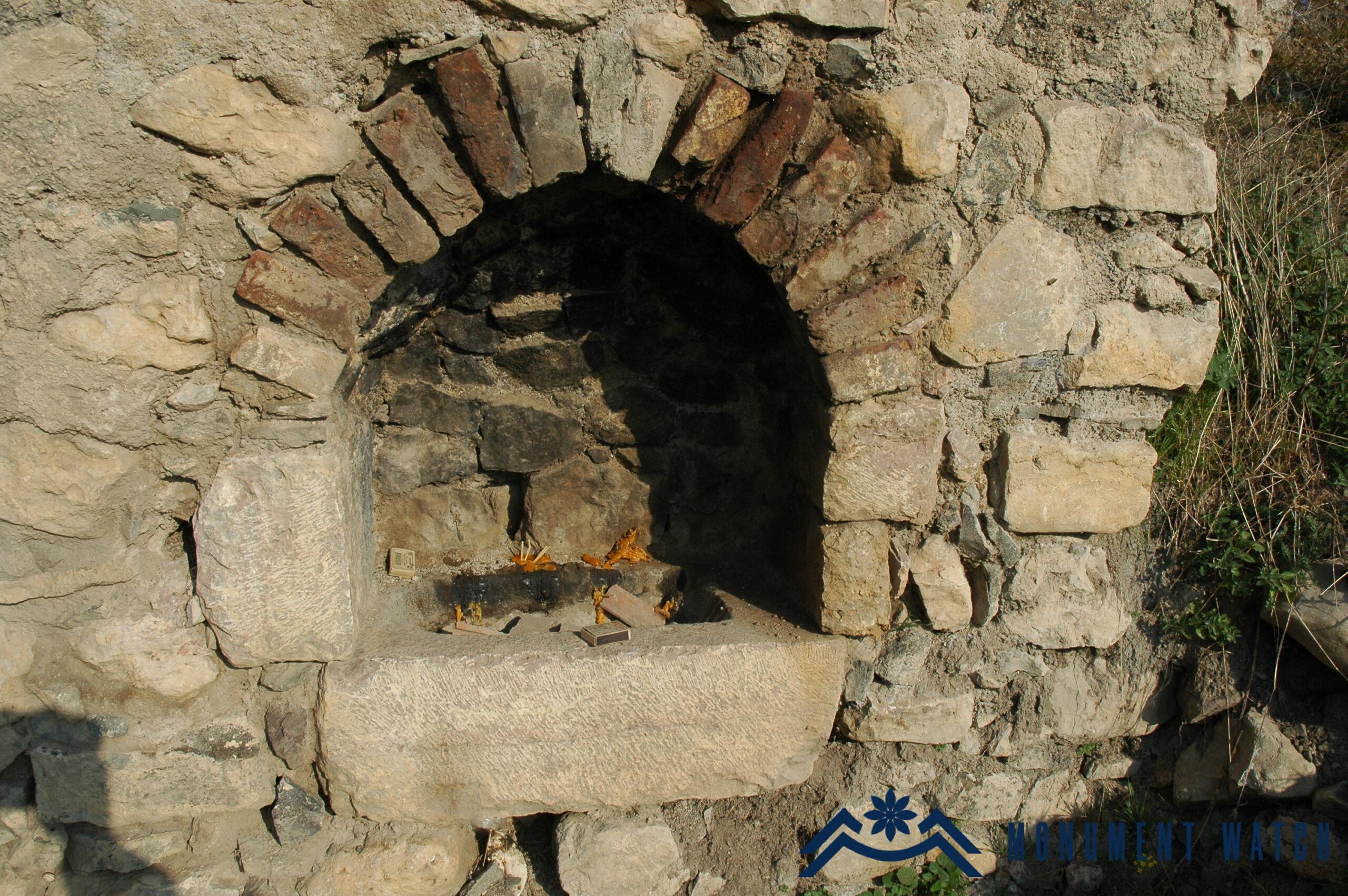The Church of the Savior (Surb Amenaprkich) in Krkzhan: Targeted by Azerbaijani Propaganda
On March 8, the Azerbaijani Ictimai TV channel of Krkzhan aired a video filmed in the Krkzhan district of the occupied city of Stepanakert. The video depicts the destroyed Surb Amenaprkich Church in Krkzhan. Interestingly, the video is titled "Demolished Albanian Monuments in Khankendi" (https://www.facebook.com/ictimaitv/videos/390901870312335/).
The video exhibits a propagandistic nature, serving the primary narrative propagated by the Azerbaijani propaganda machinery that "Armenians Armenianized the local Albanian churches." While this thesis is not novel, the title of the video suggests the emergence of a new and perilous rumor: the alleged destruction of Albanian monuments by Armenians. This video is now being disseminated on Azerbaijani social networks with captions claiming the demolition and destruction of Albanian monuments in Khankendi.
The video fails to provide any information about the ruins, not explain when the monument was destroyed or why it now lies in ruins.
The ruins showcased in the video are situated in the "Krkzhan" district of the occupied city of Stepanakert, positioned at an elevated location (Figs. 1, 2). According to documents about the monument protection zone, the dilapidated church was known as St. Most Savior. In the 19th century, various Armenian villages, including Vararak, Krkzhan, Pahlul, Nerkin Shen, and Soghomon Shen, were situated within the administrative boundaries of modern-day Stepanakert. This historical evidence is preserved in sources dating back to the 19th century. On this topic, see: https://monumentwatch.org/en/alerts/regarding-azerbaijans-bogus-claims-concerning-stepanakert/.
Krkzhan was among these villages. Makar Barkhudaryants references the village as "Karkazhan." Barkhudaryants describes the local inhabitants as indigenous, and he mentions the village church dedicated to Surb Amenaprkich, whose priest originated from the neighboring village of Ghaibalushen (Barkhutareants 1895, 152). Therefore, by the late 19th century, the church was still standing, and the villagers were noted as native Armenians.
Currently, the church stands in a state of ruin, with partially preserved remnants of the western, northern, and eastern walls (Fig. 3). It is supported by rocks from the north, west, and east, featuring notably wide windows characteristic of 19th-century churches. Constructed using rough limestone and mortar on local rock, the church retains its historical charm.
Surrounding the monument, numerous fragments of khachkars are scattered, suggesting the presence of an earlier church or sanctuary on the same site before the construction of the current church, likely in the 19th century. These fragments of khachkars are dated to the 12th-13th centuries (see Fig. 4). Additionally, there are fragments of tombstones in the vicinity, including complete tombstones with Armenian inscriptions. One of these tombstones bears the inscription of a certain Hrepsime Jovagimean, who passed away in 1870 (Fig. 5).
Thus, we are confronted with the Church of the Savior in the village of Krkzhan, which was erected in the 19th century. The surrounding cemetery and the discovery of fragments of khachkars in the vicinity suggest the existence of an earlier church or sanctuary.
During the Soviet era, a significant number of Azerbaijanis resettled in the village of Krkzhan and its vicinity, leading to the conversion of the church into a cattle ranch and its subsequent deterioration into ruins. Paradoxically, the Armenian Church constructed in the Armenian village in the 19th century was transformed into a cattle ranch by Azerbaijani settlers during the Soviet era. This historical fact has been distorted by Azerbaijani propaganda, falsely claiming that the ruined church, originally an Albanian church, was destroyed by Armenians.
Bibliography
Barkhutareants 1895 - Barkhutareants M., Artsakh, Baku.




